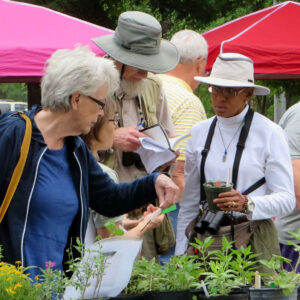By Calvin Finch Ph.D.,Guest Author
The presence of birds enhances our landscapes with color and interest, and feeding the birds helps bring them into easy viewing range. For the long term, however, including plants in your landscape that provide cover, fruit, seed sources and nectar producing blooms is the most effective way to encourage birds to visit.
As for bird feeders, clean them up and stock them with sunflower seed, safflower seed, thistle, mixed seed, suet and fruit.
- Sunflower seed is a favorite among many seed eating winter birds, most notably cardinals, blue jays, Inca doves, chickadees, titmice and house finches. Since sunflower seed is also a favorite of squirrels and white-winged doves, deter them by using a steel feeder with a weight-sensitive perch.
- Thistle is the best seed for attracting goldfinches to your yard. Tube-type feeders allow American and lesser goldfinches to perch or hang upside down at each hole in the cylinder as they feed on the thistle. Cardinals are especially fond of safflower seed, which is unappetizing to squirrels. A tube feeder with small perches will help prevent white-winged doves from consuming most of it. But only put out as much as the birds will eat by noon to reduce the attraction to rodents.
- Feed insect eating-birds suet, or beef fat, available in packages that fit in to specially made suet block holders. Woodpeckers, kinglets, and some warblers will visit the blocks, as will jays, titmice, and chickadees.
- Birds also enjoy fruit; skewer apple or citrus halves onto a nail or stem to attract house finches, mockingbirds, and cardinals. Pieces of banana and old grapes can be placed on a platform feeder for the birds.
- Don’t forget the importance of water. A bird bath that is rinsed and refilled often will attract as many birds as a well-stocked feeder.
Calvin R. Finch is a director at Texas A&M Water Conservation and Technology Center.


